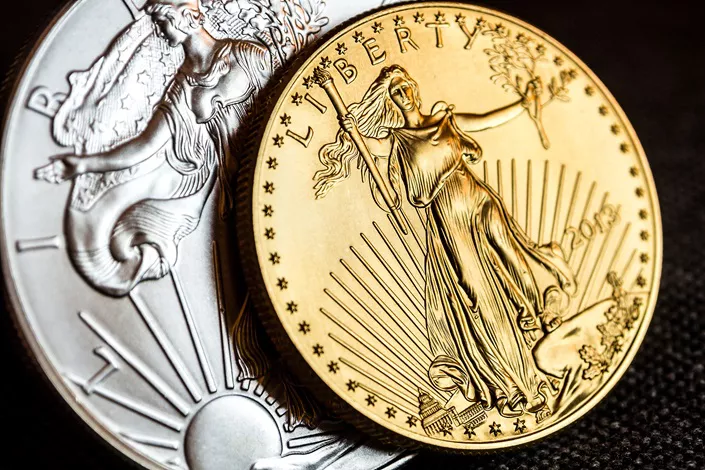Precious metals like gold and silver have always intrigued investors and enthusiasts alike. Their values fluctuate daily, influenced by various economic and geopolitical factors. Let’s delve into the current spot prices of gold and silver and explore the elements that drive their changes.
What Are Spot Prices?
The spot price refers to the current market price at which a particular commodity, like gold or silver, can be bought or sold for immediate delivery. These prices are dynamic, changing minute by minute, reflecting real-time market conditions.
Current Spot Price of Gold
As of April 1, 2025, gold has reached unprecedented heights. Spot gold surged to a record high of $3,143.05 per ounce, marking a 0.6% increase from the previous day. This surge is primarily attributed to growing concerns over U.S. President Donald Trump’s proposed tariffs, which are feared to ignite inflation and impede economic growth.
Current Spot Price of Silver
Silver, often considered the sister metal to gold, has also seen significant movements. As of March 26, 2025, the spot price of silver was approximately $29.67 per ounce. However, by March 31, 2025, it had risen to $34.08 per ounce, reflecting a 15% increase in just five days. This sharp rise aligns with the heightened demand for safe-haven assets amid economic uncertainties stemming from trade tensions.
Factors Influencing Gold and Silver Prices
Several elements play pivotal roles in determining the spot prices of gold and silver:
Economic Indicators
Economic data, such as GDP growth rates, employment figures, and inflation statistics, can influence the strength of fiat currencies. When economic indicators are weak, investors often flock to precious metals as a store of value.
Geopolitical Events
Events like wars, elections, and policy changes can introduce volatility into financial markets. Such uncertainties typically drive investors towards gold and silver, seeking stability.
Currency Movements
The strength of the U.S. dollar, in particular, has an inverse relationship with gold and silver prices. A stronger dollar makes these metals more expensive for holders of other currencies, potentially dampening demand.
Interest Rates
Central banks influence interest rates to control inflation and stabilize economies. When interest rates are low, the opportunity cost of holding non-yielding assets like gold and silver decreases, often leading to increased investment in these metals.
Supply and Demand Dynamics
The availability of gold and silver, influenced by mining outputs and recycling rates, affects their prices. Additionally, industrial demand, especially for silver in electronics and solar panels, can impact its spot price.
Investment Avenues in Gold and Silver
For those looking to invest in these precious metals, several options are available:
Physical Bullion
Purchasing gold and silver in physical forms, such as coins or bars, allows investors to hold tangible assets. However, considerations regarding storage and security are essential.
Exchange-Traded Funds (ETFs)
ETFs like the SPDR Gold Shares (GLD) and iShares Silver Trust (SLV) offer investors exposure to gold and silver without the need to handle physical metals. As of April 1, 2025, GLD is priced at $288.14, reflecting a 1.44% increase from the previous close. SLV is priced at $30.99, with a slight decrease of 0.032%.
Mining Stocks
Investing in companies that mine gold and silver provides indirect exposure to these metals. The performance of mining stocks can be influenced by factors beyond metal prices, including operational efficiency and geopolitical risks.
Futures Contracts
Futures allow investors to agree to buy or sell gold or silver at a predetermined price at a specified future date. This method is typically favored by experienced investors due to its complexity and risk.
Hedging with Gold and Silver
Gold and silver have historically served as hedges against inflation and currency devaluation. During periods of economic instability, when fiat currencies may lose value, these metals often retain their purchasing power, making them attractive to investors seeking to preserve wealth.
The Role of Central Banks
Central banks hold significant reserves of gold, using it to diversify their holdings and stabilize their currencies. Recent years have seen increased gold purchases by central banks, contributing to the upward pressure on gold prices.
Industrial Applications of Silver
Beyond its appeal as an investment, silver has numerous industrial applications. It’s used in electronics, photovoltaics, and various chemical processes. This industrial demand adds a layer of complexity to silver’s price movements, as both investment and consumption factors come into play.
Market Liquidity and Accessibility
Both gold and silver markets are highly liquid, allowing investors to buy or sell without significant price concessions. The accessibility of these markets, through various investment vehicles, has democratized precious metal investing, enabling individuals worldwide to participate.
Conclusion
The spot prices of gold and silver are influenced by a myriad of factors, including economic indicators, geopolitical events, currency movements, interest rates, and supply-demand dynamics. As of April 1, 2025, both metals have reached significant price points, reflecting the current economic climate and investor sentiment. For investors, understanding these dynamics and the available investment options is crucial for making informed decisions in the precious metals market.
Related Topics:

